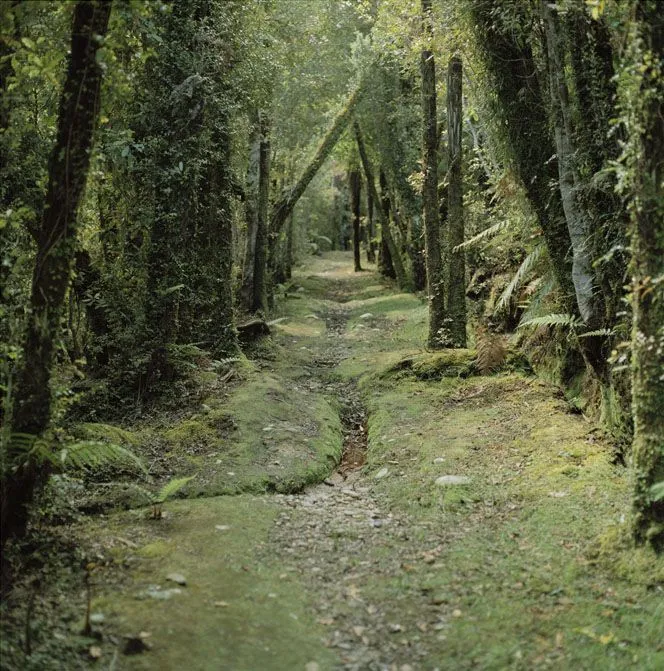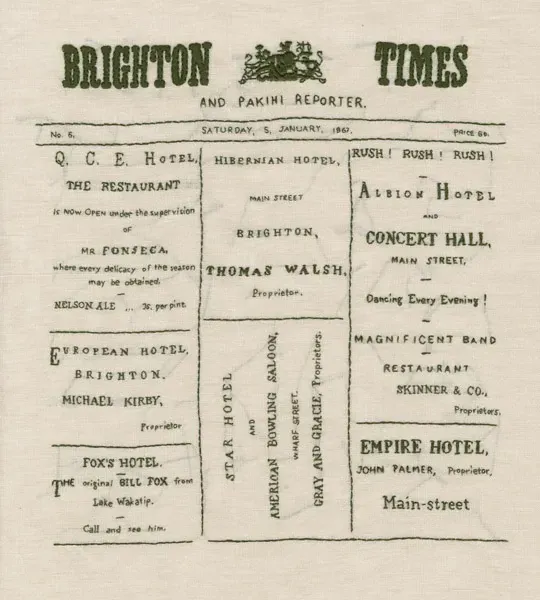'No Town' explores vanished towns on gold rush anniversary

The exhibition ‘No Town’ by Caroline McQuarrie is touring the West Coast from November - January this summer. Exploring sites on the West Coast of the South Island that used to be towns but are now no longer or only sparsely inhabited, ‘No Town’ utilises photography and embroidery to show the sites as they now are, and explore the communities that have been lost. Incorporating eight areas, which include thirteen towns, the three exhibitions in Hokitika, Reefton and Greymouth coincide with the 150th anniversary of the gold rush that kick started European habitation of the West Coast. Wellington artist
Caroline McQuarrie grew up on the West Coast and has long been interested in the history of the region. Over the last two and a half years she has been researching and visiting sites where communities sprung up due to gold or coal, and vanished when the resources ran out. A lecturer in photography at Toi Rauwharangi College of Creative Arts, Massey University, McQuarrie has photographed the sites and combined these images with her trademark craft works highlighting the domestic and community aspects of the history of the sites. “Growing up on the West Coast I was aware of the history of the area in a background way” says Caroline, “it has been wonderful to have the opportunity to research the region more intensely, and really explore some remote places for this exhibition. I have immensely enjoyed being able to spend so much time on the West Coast and really get to know it again.” Greymouth is celebrating its 150th anniversary this year during September-October, and Hokitika has a yearlong celebration planned starting in December. The discovery of gold at Greenstone, near Kumara, in Sept 1964 was the catalyst for the gold rush that swiftly followed, and a number of the towns featured in ‘No Town’ were formed directly from that rush. McQuarrie’s photographs of these sites are by necessity of something that isn’t there. “I wanted to concentrate people’s attention into a narrower field of view, often the images are about the foreground – the patch of land that is now empty but hasn’t always been.” The embroidered samplers give context to the photographs, incorporating maps, statistics, poems and quotes from contemporary newspapers. “The samplers are to remind people of the women and families who lived in these communities. So often the history of these places is discussed through the mining, but the people in the mines had families at home building a community around them.” McQuarrie has also made an online archive of images that features photos from the exhibition as part of an extended exploration of sites of this kind on the Coast. http://www.thenotownproject.org is an ongoing project as she extends this work beyond a single exhibition. “I realised I was collecting so many images that were interesting in terms of recording the sites as they are at this point in our history, but that didn’t fit within the narrower narrative of the exhibition, so I created the website as an archive”. ‘No Town’ was shown at Aratoi, Wairarapa Museum of Art and History earlier in 2014. Exhibitions are at the following venues: Carnegie Gallery, Hokitika Museum 4-21 Nov 2014 Opening: 5.30pm Mon 3 Nov - all welcome Reefton iSite (only some images shown due to reduced space) 25 Nov - 7 Dec 2014 Opening: 5.30pm Mon 24 Nov - all welcome Left Bank Gallery, Greymouth 13 Dec 2014 - 24 Jan 2015 Opening: 6pm Fri 12 Dec - all welcome www.thenotownproject.org www.carolinemcquarrie.com
